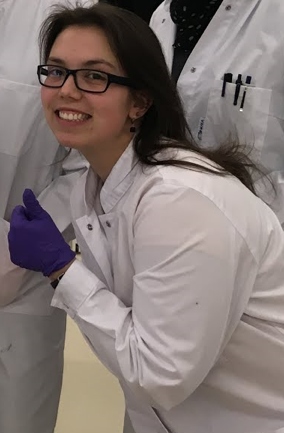|
Optical nanoscopy of the pharmacological clearance function of LSECs |
|
Project 13 - Larissa Kruse University of Tromsø - The Arctic University of Norway |
|
Objectives: (1) Generation of monoclonal antibodies to stabilin-2, the major workhorse LSEC scavenger receptor (2) Use of these antibodies to map the fate of stabilin-2 and its ligands in LSEC during scavenging by SR-SIM (3) Use of antibodies to determine changes in the expression (number and location) of LSEC stabilin-2 in response to small molecule challenge in vitro and in vivo in rodents, and in precision cut liver slice specimens from animal models of liver disease and of diseased and normal human liver specimens by SR-SIM |
|
Expected Results: (1) Highly specific antibody reagents that recognise stabilin-2 generated (2) dissemination of antibodies to beneficiaries and partners (3) nanoscopic imaging of stabilin-2 dynamics in vitro demonstrated (resolution 100 nm, speed 20 frames/s (3D) (4) changes in stabilin-2 expression determined in response to small-molecule interactions (5) imaging of stabilin-2 within LSEC precision cut liver slices by SR-SIM nanoscopy achieved |
|
The project is about the liver sinusoidal endothelial cells (LSECs) and their scavenger function. The liver consists of different cells, which are the parenchymal and non-parenchymal cells. The liver cells that most people know about are the hepatocytes. Larissa is working with one family of the non-parenchymal cells, namely the liver sinusoidal endothelial cells or LSECs. LSECs are cells that line the sinusoids, which are the capillaries of the liver. The endothelial cells line all vessels that direct the blood running in your body. In comparison to other endothelial cells, LSECs are special because they have holes called "fenestrations". These «liver holes» are found in groups called sieve plates and they are dynamic structures. That means they can be bigger and smaller and they can also disappear completely. The fenestrations become smaller and fewer with age, liver diseases such as fibrosis and through substance abuse such as excessive alcohol consumption. LSECs filter substances and fluids out of the blood stream. This process is called “scavenging”. Some substances might be able to change the “holiness” of the LSECs and influence their scavenging process/behaviourand we want to know which substances are influencing the liver holes how. Larissa is trying to figure out, what makes liver holes happy. At the moment Larissa is working on the influence of branched chain amino acids (BCAAs) on LSECs. BCAAs are the amino acids leucine, isoleucine and valine. They belong to the essential amino acids and therefore need to be taken up by the human body, for example, with food. BCAAs are known to be taken by athletes and body-builders as they are said to help with muscle built up and they are supposed to give you more energy. Larissa is interested in how the BCAAs influence the LSEC fenestrations and she would like to see what is happening. Therefore she is working with endocytosis experiments but also with super resolution microscopy to make the holes visible for the naked eye. Larissa is using scanning electron microscopy (SEM), structured illumination microscopy (SIM) and direct stochastic optical reconstruction microscopy (dSTORM). The goal is to find targets and develop antibodies for certain receptors to make the functionality of the LSEC visible and thus be able to find out how the different substances, for example BCAAs influence the LSEC fenestrations. |
|
Project Lead: Early Stage Researcher:
|
Chocolate and book-loving German village nerd-kid travelling to find her research home in Arctic vascular biology This is Larissa Kruse. She is 28 years old and originally from Germany. Larissa started studying Forensic Sciences in Bonn, Germany in 2010. Since then, she has moved from there to Scotland and England to study some more Forensic Science and Ballistics. In 2015, she came back to the north of Germany, Bremerhaven, where she did her M.Sc. in Biotechnology. During her thesis, which she wrote in Stockholm, Sweden, Larissa did research in medical biology and proteomics and this is her professional field of interest now. Larissa likes nature, especially animals and water and loves reading books and watching movies. In September 2018 Larissa moved to Tromsø, Norway, which is way above the Arctic Circle and therefore is not displayed on German weather maps. Larissa is a PhD student in the Vascular Biology Research Group and part of the DeLIVER project. |


